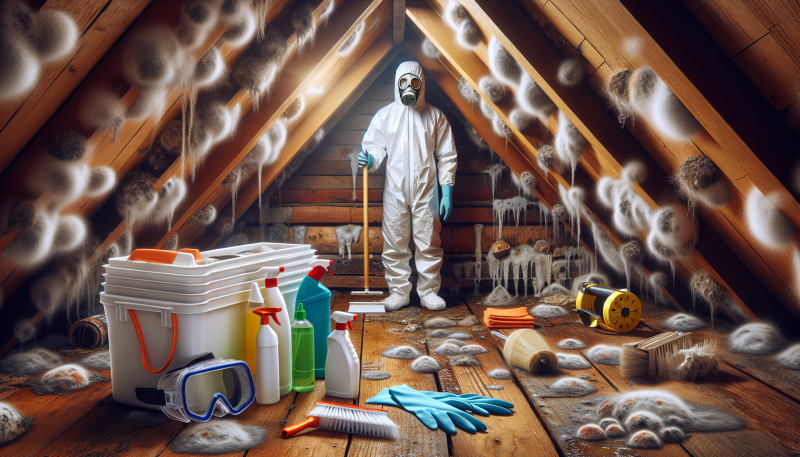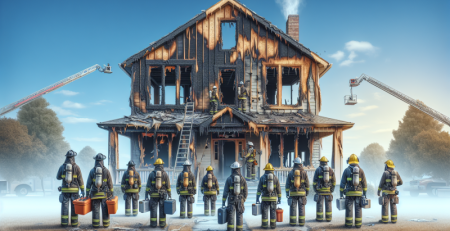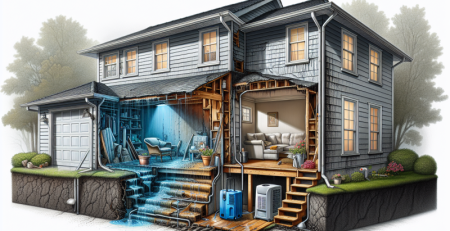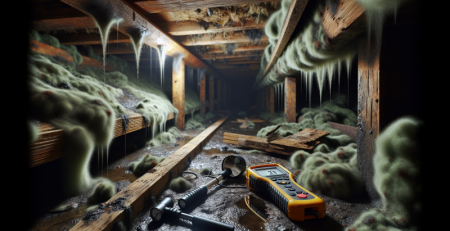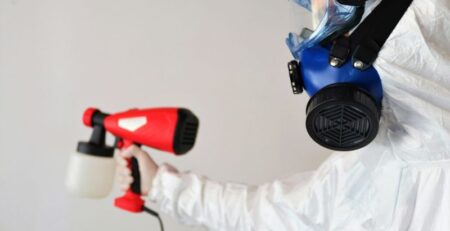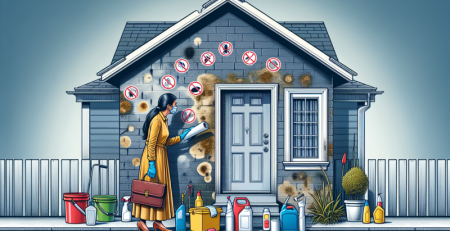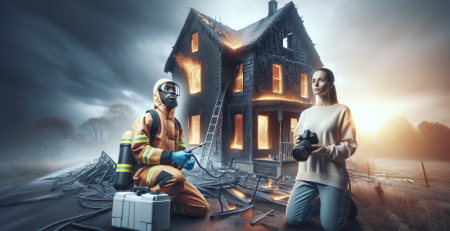Mold in Your Attic: Identification and Removal
Outline
Introduction
- Importance of addressing mold in the attic
- Brief overview of the blog content
Understanding Mold: What Is It?
- Definition and types of mold
- Common causes of mold in attics
Signs of Mold in Your Attic
- Visual indicators
- Odor and air quality
- Health symptoms
How to Identify Mold in Your Attic
- DIY inspection tips
- When to call a professional
The Dangers of Mold in Your Attic
- Health risks
- Structural damage
- Financial implications
Steps to Remove Mold from Your Attic
- Safety precautions
- DIY mold removal
- Professional mold removal services
Preventing Mold Growth in Your Attic
- Proper ventilation
- Regular inspections
- Addressing water damage
Choosing the Right Restoration Service
- Importance of IICRC certified experts
- Benefits of 24/7 emergency services
- Why choose Kraus Restoration
Conclusion
- Recap of key points
- Encouragement to take action
FAQs
- How quickly can mold spread in an attic?
- Can I remove mold myself, or do I need a professional?
- What should I do if I find mold in my attic?
- How can I prevent mold from returning?
- Why is Kraus Restoration the best choice for mold cleanup in New Jersey?
Dealing with mold in your attic can be a daunting task, but it’s crucial for maintaining a healthy home environment. Mold not only poses health risks but can also cause significant structural damage if left unchecked. In this blog, we’ll guide you through the process of identifying and removing mold from your attic, ensuring your home remains safe and sound.
Whether you’re dealing with a minor mold issue or a major infestation, understanding the steps to take can make all the difference. From identifying the signs of mold to choosing the right restoration service, we’ve got you covered. Let’s dive in!
Understanding Mold: What Is It?
Mold is a type of fungus that thrives in damp, humid environments. It reproduces through tiny spores that float through the air, making it easy for mold to spread and grow in various parts of your home, especially the attic. There are several types of mold, but the most common ones found in homes include Aspergillus, Cladosporium, and Stachybotrys (commonly known as black mold).
Attics are particularly susceptible to mold growth due to their tendency to trap moisture and lack of proper ventilation. Common causes of mold in attics include roof leaks, poor insulation, and inadequate ventilation. Understanding these causes can help you take preventive measures to keep mold at bay.
For more detailed information on mold and its causes, you can visit our mold cleanup services page.
Signs of Mold in Your Attic
Identifying mold in its early stages can save you a lot of trouble down the line. Here are some common signs to look out for:
Visual Indicators
One of the most obvious signs of mold is visible growth. Mold can appear as black, green, or white patches on walls, ceilings, and other surfaces. It often looks fuzzy or slimy and can spread quickly if not addressed.
Odor and Air Quality
Mold has a distinct musty odor that can be quite strong, especially in enclosed spaces like attics. If you notice a persistent musty smell, it’s a good indication that mold may be present. Additionally, mold spores can affect the air quality in your home, leading to respiratory issues and other health problems.
Health Symptoms
Exposure to mold can cause a range of health symptoms, including coughing, sneezing, itchy eyes, and skin irritation. In more severe cases, it can lead to respiratory infections and other serious health issues. If you or your family members are experiencing unexplained health problems, it’s worth checking for mold in your attic.
For more information on identifying mold, check out our residential projects page.
How to Identify Mold in Your Attic
Identifying mold in your attic can be challenging, especially if it’s hidden behind walls or insulation. Here are some tips to help you spot mold:
DIY Inspection Tips
Start by conducting a thorough visual inspection of your attic. Look for any signs of water damage, such as stains or discoloration on walls and ceilings. Pay close attention to areas around vents, chimneys, and roof leaks, as these are common spots for mold growth.
Use a flashlight to inspect dark corners and hidden areas. If you notice any suspicious spots, take a closer look to determine if it’s mold. You can also use a moisture meter to check for dampness in walls and insulation, as mold thrives in moist environments.
When to Call a Professional
While a DIY inspection can help you identify visible mold, it’s often best to call in a professional for a thorough assessment. Professional mold inspectors have the tools and expertise to detect hidden mold and assess the extent of the infestation. They can also provide recommendations for remediation and prevention.
If you suspect mold in your attic, don’t hesitate to contact Kraus Restoration for a professional inspection. Our IICRC certified experts are equipped to handle all your mold cleanup needs.
The Dangers of Mold in Your Attic
Mold in your attic is more than just an unsightly problem. It can pose serious risks to your health and home. Here’s why you should take mold seriously:
Health Risks
Exposure to mold can cause a range of health issues, from mild allergic reactions to severe respiratory problems. Common symptoms include coughing, sneezing, itchy eyes, and skin irritation. In more severe cases, mold exposure can lead to asthma attacks, respiratory infections, and other serious health conditions.
Structural Damage
Mold can cause significant damage to your home’s structure. It feeds on organic materials like wood, drywall, and insulation, weakening these materials over time. This can lead to structural issues, such as sagging ceilings, warped walls, and compromised support beams.
Financial Implications
Addressing mold in its early stages can save you a lot of money in the long run. If left unchecked, mold can cause extensive damage that requires costly repairs. Additionally, mold remediation can be expensive, especially if the infestation is widespread. Taking prompt action can help you avoid these financial burdens.
For more information on the dangers of mold, visit our services page.
Steps to Remove Mold from Your Attic
Removing mold from your attic requires careful planning and execution. Here’s a step-by-step guide to help you tackle the problem:
Safety Precautions
Before you begin, it’s important to take safety precautions to protect yourself and your home. Wear protective gear, including gloves, goggles, and a mask, to avoid direct contact with mold spores. Ensure proper ventilation in the attic to minimize exposure to airborne spores.
DIY Mold Removal
If the mold infestation is minor, you may be able to handle the cleanup yourself. Start by removing any contaminated materials, such as insulation and drywall. Use a mixture of water and detergent to scrub away mold from surfaces. For more stubborn mold, you can use a commercial mold remover or a solution of bleach and water.
Be sure to thoroughly dry the area after cleaning to prevent mold from returning. Use fans and dehumidifiers to speed up the drying process. Keep in mind that DIY mold removal is only recommended for small infestations. If the mold covers a large area or has penetrated deep into materials, it’s best to call a professional.
Professional Mold Removal Services
For larger infestations or if you’re unsure about handling the cleanup yourself, it’s best to hire a professional mold removal service. Professionals have the tools and expertise to safely and effectively remove mold from your attic. They can also address the underlying causes of mold growth, such as water damage and poor ventilation.
At Kraus Restoration, we offer comprehensive mold cleanup services to help you restore your home to a safe and healthy condition. Our IICRC certified experts use advanced techniques and equipment to ensure thorough mold removal and prevention.
Preventing Mold Growth in Your Attic
Preventing mold growth in your attic is key to maintaining a healthy home environment. Here are some tips to help you keep mold at bay:
Proper Ventilation
Ensuring proper ventilation in your attic is crucial for preventing mold growth. Install vents and fans to promote air circulation and reduce humidity levels. Make sure your attic is well-insulated to prevent condensation and moisture buildup.
Regular Inspections
Conduct regular inspections of your attic to catch any signs of mold early. Look for water stains, discoloration, and musty odors. Address any issues promptly to prevent mold from spreading.
Addressing Water Damage
Water damage is a common cause of mold growth in attics. Fix any roof leaks, plumbing issues, or other sources of water intrusion as soon as possible. Use a dehumidifier to keep humidity levels in check and prevent moisture buildup.
For more tips on preventing mold growth, visit our water cleanup services page.
Choosing the Right Restoration Service
When it comes to mold removal, choosing the right restoration service is crucial. Here’s why you should consider Kraus Restoration:
Importance of IICRC Certified Experts
Our team of IICRC certified experts has the training and experience to handle all your mold cleanup needs. We use advanced techniques and equipment to ensure thorough and effective mold removal.
Benefits of 24/7 Emergency Services
Mold can spread quickly, so it’s important to address the problem as soon as possible. Our 24/7 emergency services ensure that we’re always available to respond to your needs, no matter the time of day or night.
Why Choose Kraus Restoration
At Kraus Restoration, we’re committed to providing top-notch restoration services to our clients. We offer rapid response, professional restoration services, and a dedication to customer satisfaction. Serving Central and Northern NJ, we’re your go-to experts for mold cleanup, water damage restoration, and fire damage repair.
For more information on our services, visit our about us page.
Conclusion
Dealing with mold in your attic can be a challenging task, but with the right knowledge and resources, you can effectively address the problem and prevent it from returning. Remember to conduct regular inspections, address water damage promptly, and ensure proper ventilation in your attic.
If you’re dealing with a mold infestation, don’t hesitate to contact Kraus Restoration. Our IICRC certified experts are here to help you with all your mold cleanup needs. Offering 24/7 emergency services and rapid response, we’re your trusted partner in property damage restoration in New Jersey.
Call us today at (973) 886-2021 to schedule a consultation and take the first step towards a mold-free home.
FAQs
How quickly can mold spread in an attic?
Mold can spread rapidly in the right conditions, often within 24 to 48 hours. It’s important to address any signs of mold as soon as possible to prevent it from spreading and causing further damage.
Can I remove mold myself, or do I need a professional?
For small infestations, you may be able to handle the cleanup yourself using proper safety precautions and cleaning techniques. However, for larger infestations or if you’re unsure about handling the cleanup, it’s best to hire a professional mold removal service.
What should I do if I find mold in my attic?
If you find mold in your attic, start by identifying and addressing the source of moisture. Conduct a thorough inspection to determine the extent of the infestation. For larger infestations, contact a professional mold removal service for assistance.
How can I prevent mold from returning?
To prevent mold from returning, ensure proper ventilation in your attic, conduct regular inspections, and address any water damage promptly. Use a dehumidifier to keep humidity levels in check and prevent moisture buildup.
Why is Kraus Restoration the best choice for mold cleanup in New Jersey?
Kraus Restoration is NJ’s leader in water, mold, and fire damage restoration. Our IICRC certified experts offer 24/7 emergency services, rapid response, and professional restoration services. Serving Central and Northern NJ, we’re committed to providing top-notch service and customer satisfaction.
